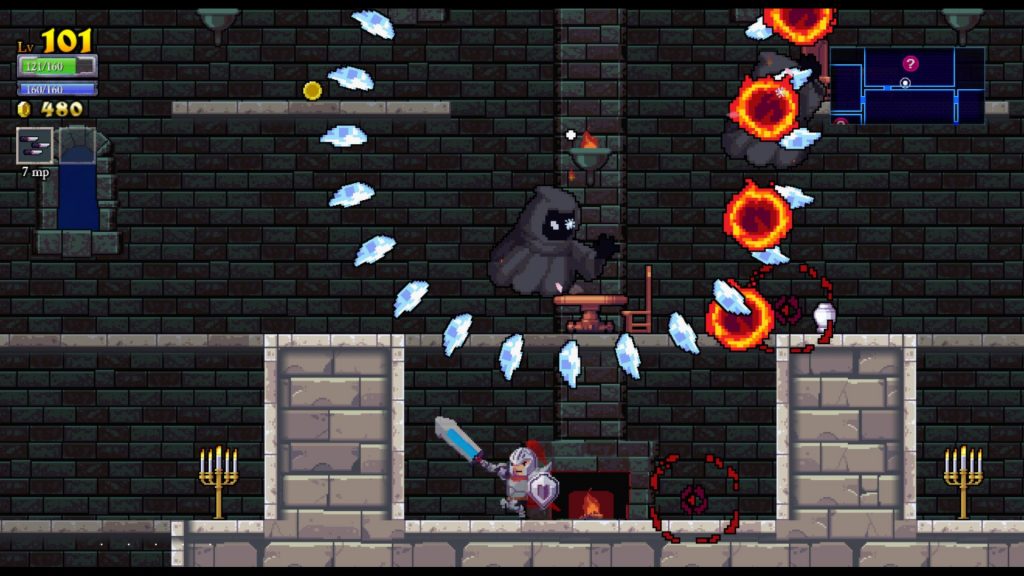While the roguelike genre possesses a history going back several decades, recent years have certainly seen a surge of interest in the genre. While this has largely been in the form of digital releases on PC, a number of the more popular PC roguelikes have later been ported to consoles, and in this feature I’m going to look at three such titles released on PlayStation 4: Spelunky, The Binding of Isaac: Rebirth and Rogue Legacy.
Spelunky
With its original release on PC by developer Derek Yu dating back to 2008, Spelunky is a platformer which has been around for a while, although it’s actually the enhanced edition of the game which was later released on consoles (and rereleased on PC).
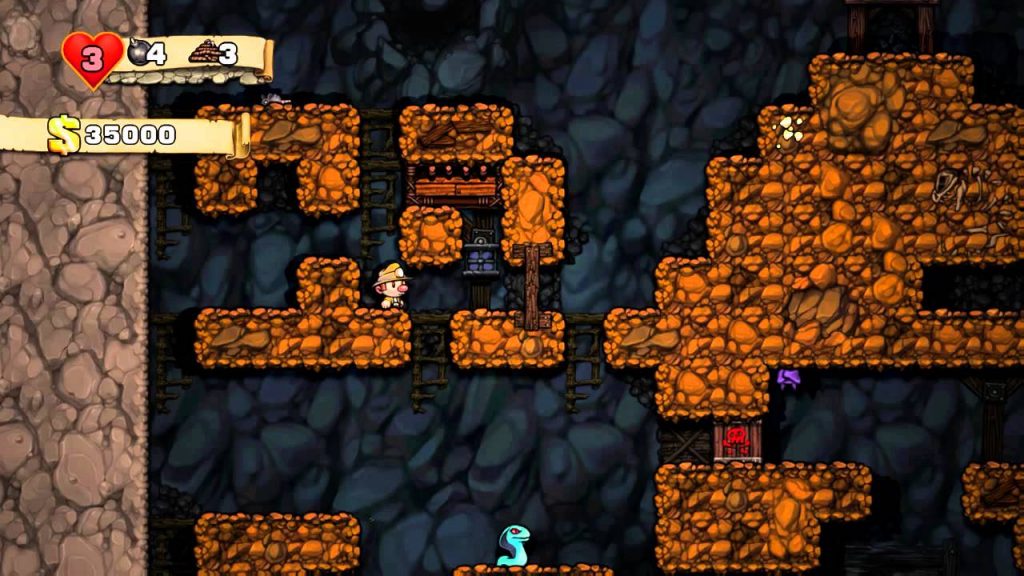
Spelunky sees you choosing an adventurer and then descending through a series of procedurally generated levels, collecting treasure, saving (or sacrificing) damsels, purchasing (or stealing) items and weapons, and dealing with traps and enemies. The game received widespread critical acclaim and saw a passionate community of players build up around it.
But when I played the game for the first time recently, I found myself bored within thirty minutes and unable to see what all the fuss was about. While the graphics are bold and colourful, and the soundtrack is varied and sometimes catchy, I found the controls to be occasionally awkward – getting off ladders with accuracy can be a hassle, your two movement speeds are a sluggish walk or a slippery sprint – and the high difficulty frustrating.
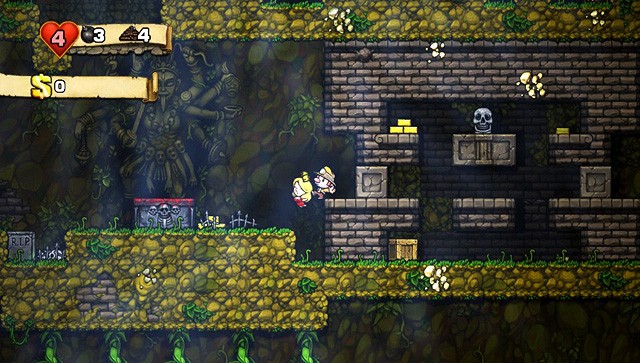
Unsurprisingly, given the genre, death sends you right back to the beginning of the game, although repeat play can unlock shortcuts, if you have enough patience and possess the correct items at the correct times. And so, unless you find yourself captivated by the gameplay for its own sake, playing Spelunky can quickly become a tedious, repetitive and pointless-feeling affair as you play through samey-looking levels – being procedurally generated doesn’t automatically make these levels or their visual themes interesting, far from it – over and over, suffering one progress-erasing (and often annoyingly abrupt) death after another.
I realise that the above complaint regarding Spelunky’s structure might suggest that I simply don’t “get” roguelikes but that’s not true (ToeJam & Earl is one of my favourite games of all time), I just believe that it’s a difficult genre to do well, and for me, Spelunky certainly falls short due to being too dull and frustrating to warrant much in the way of repeat play.
The Binding of Isaac: Rebirth
As with Spelunky, the Rebirth version of The Binding of Isaac is actually an updated version of the original game, which was designed by Edmund McMillen and Florian Himsl and released in 2011.
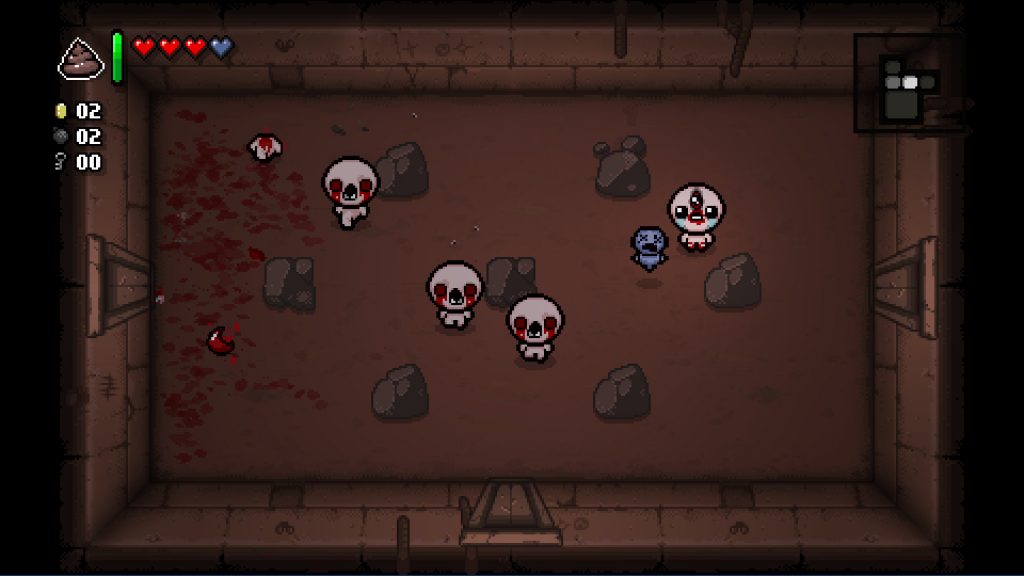
In this gory shooter, players take control of Isaac (or one of several other playable characters), a young boy who descends into the basements, caves, catacombs and other environments beneath his house while fleeing from his deranged mother, who wants to sacrifice him to God. Utilising his own tears as a weapon (sorry, emo kids, but this doesn’t work in real life), and assisted by items and power-ups which can be found or bought, Isaac must navigate procedurally generated levels while battling hordes of grotesque enemies and bosses, his ultimate goal being to defeat his mother.
Once again, death sends you back to the beginning of the game, meaning that once again you’re going to be looking at the same environment types over and over, and TBOI:R suffers from its environments being largely dull: the dominant colours are brown and grey, and environmental features consist of little more than holes, rocks and small fires.
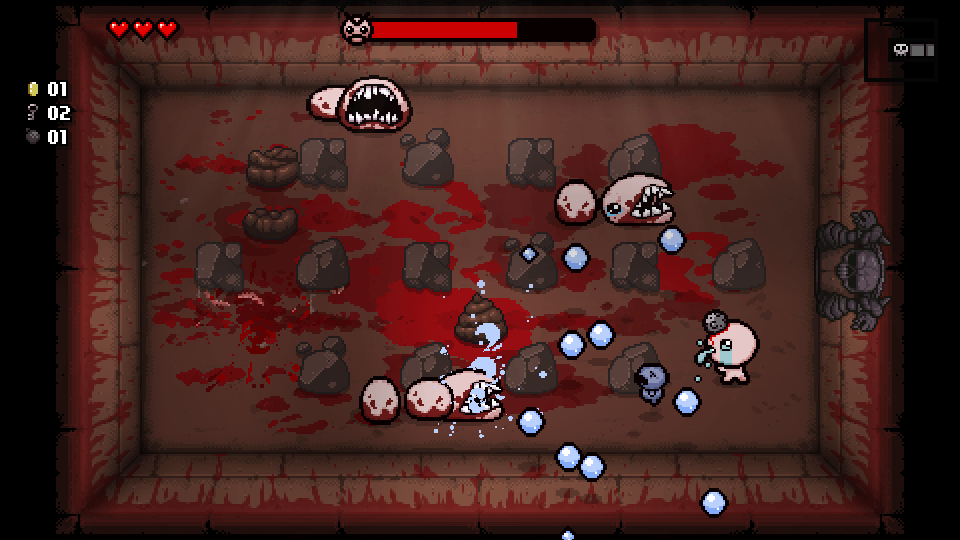
Also, while the game contains a vast number of items and power-ups, the effect of some of these can only be discovered through trial-and-error, leading to luck sometimes becoming a more overriding factor than the player’s own skill. And while the game permanently records images of the items you’ve collected, there are no descriptions to go with them, so you better have a good memory if you want to remember what the more obscure items actually do.
While I certainly enjoyed TBOI:R more than Spelunky – it’s easy to pick up and play, combat can occasionally be fluid and exciting, there are a number of new environments and bosses to unlock – it still possesses flaws which soured me on the game: bland environments, the fact that a lengthy run can suddenly come to nothing due to chance rather than lack of skill, and how each playthrough starts out so tediously thanks to your basic character being so weak.
As with Spelunky, while I recognise that TBOI:R has a lot of fans, personally the game left me underwhelmed.
Rogue Legacy
Now this is more like it.
Developed by Cellar Door games and originally released in 2011, Rogue Legacy was a game I’d been looking forward to playing for a while. When I finally got around to doing so, it didn’t disappoint, and it’s by far my favourite game out of the three I’ve looked at in this feature.
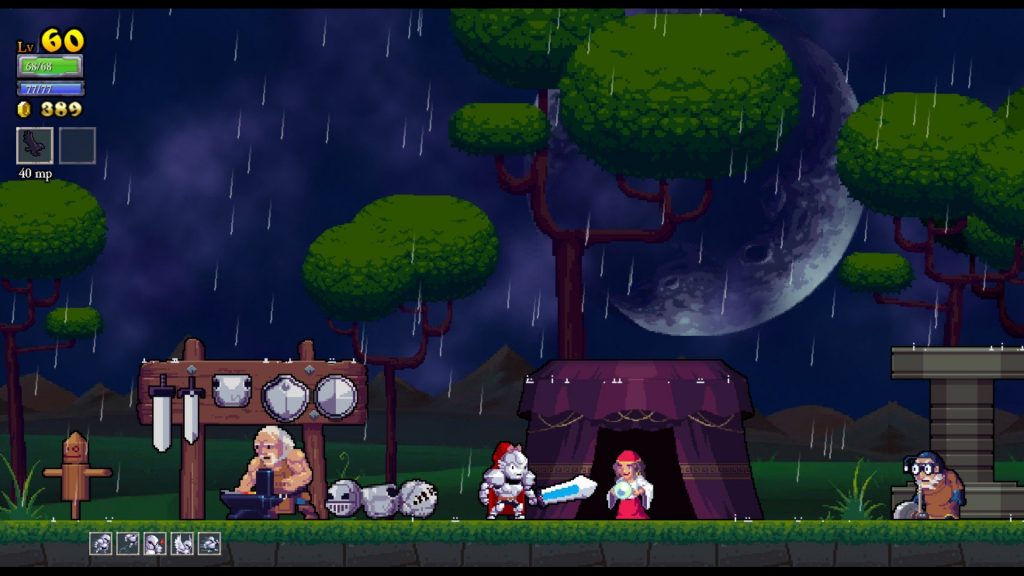
Rogue Legacy is an action-platformer which casts you as a knight on a quest to explore a sprawling (and procedurally generated) castle and uncover the secrets within while battling mages, knights, spirits, zombies, and other enemies, not to mention the four bosses which must be defeated before you can gain access to the heart of the castle. While your primary weapon is a sword, there are also several types of magic available, although these cost mana to use.
One area in which Rogue Legacy surpasses Spelunky and The Binding of Isaac: Rebirth is in its environments (the castle being split into four visually distinct sections), which are much more appealing and interesting here than in those other two games, making it far less of a chore to navigate them repeatedly.
Another reason why I personally consider Rogue Legacy to be the superior game is its melding of a roguelike structure with a much more prominent sense of progression. Although death still sends you back to the beginning of the game, you retain any gold you collected during your most recent run, and this can then be used to permanently strengthen your character in a number of different ways and even unlock new character classes to choose from. This way, even a less than stellar run can still end up being helpful in terms of your long-term progress, as long as you’ve got enough gold for some kind of upgrade.
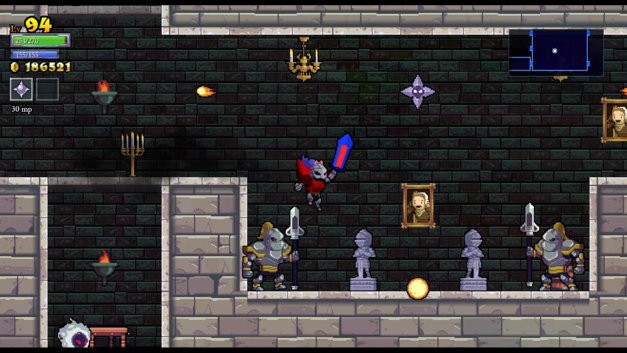
Along with its enjoyable visuals and expansive upgrade tree, another way in which the game adds replayability is in its heir system. When you die, your following character – you choose one of several randomly generated characters each time – is actually a descendant of your recently deceased adventurer, and each descendant carries a genetic trait such as colour-blindness (the game is presented in black-and-white) or gigantism (your character is increased in size). These traits can help or hinder, and they do a good job of adding variety without introducing too overpowering an element of chance.
If you’re a fan of roguelikes then all three of these games are certainly worth taking a look at, as you may well get more enjoyment than I did out of Spelunky and The Binding of Isaac: Rebirth. (Plenty of other people have). But Rogue Legacy is absolutely my pick of the three as it’s not only one of the best roguelikes I’ve played in some time but also an overall high-quality action-platformer.
Emily Medlock is an avid gamer whose passions not only include video games of all kinds, but anime, music, movies, and reading.

